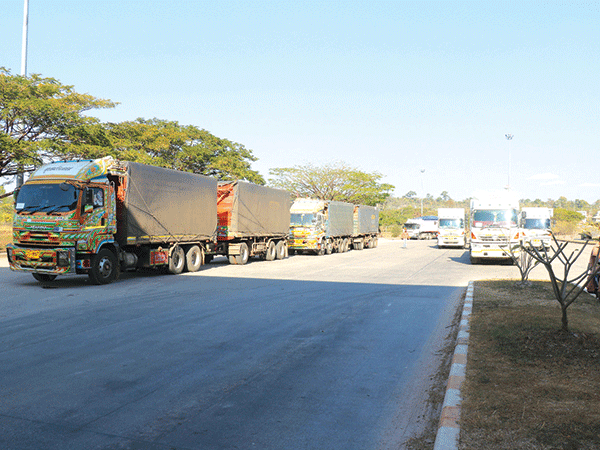Recovery in services, investment to boost growth in Laos: ADB
The recovery in services and private sector investments is expected to drive economic growth in Laos this year and next year as pandemic restrictions are eased throughout the region, according to a new Asian Development Bank (ADB) report.
ADB’s flagship publication “Asian Development Outlook” for April 2023 forecasts gross domestic product (GDP) growth in Laos this year and next at 4 percent, rising from the 2.5 percent reported by ADB last year.
 |
| Transportation of goods between Laos and its neighbours are expected to grow. |
The ADB report is optimistic that fresh investment in renewable energy, including the 600-megawatt Monsoon Wind Power Project funded by a financial package of US$692.55 million, and border reopening will give a boost to recovery.
“With upgrades to major connectivity infrastructure complete and the reopening of borders including with the People’s Republic of China, international tourist arrivals are projected to double to 2.6 million in 2023 from a year earlier,” the report stated.
“Transit freight is expected to continue its steady expansion, with 1.3 million passengers and 1.9 million tonnes of cargo transported through the Laos-China railway in 2022.”
However, challenges remain. Inflation pressure will remain high in 2023, projected at 16 percent, before moderating to 5 percent in 2024.
The ADB report states that prices are expected to climb as businesses pass on costs from imported goods and wage increases to consumers.
Adjustments are also planned for electricity tariffs. As such, domestic consumption and the job market are expected to remain weak.
“Prospects for economic recovery have improved,” said ADB Country Director for the Lao PDR, Sonomi Tanaka.
“A concern is that inflationary pressure will remain high in 2023. This poses risks to the balance sheets of households, businesses, and the government. Focus on coordination of policy responses is essential to ensure that economic recovery is inclusive and resilient against future shocks.”
With almost two-thirds of the Lao population currently of working age, Laos’ young workforce means that more people have the potential to be productive and contribute to economic growth.
However, the ADB report voices concern that high inflation and comparatively low wages mean that many workers are opting to work in neighbouring countries, where they can earn more.
The Ministry of Labour and Social Welfare estimated that the number of Lao nationals leaving their hometowns in search of better paid work in Thailand could rise to as many as 400,000-500,000.
Meanwhile, factories and enterprises in Laos are struggling to hire sufficient people to manufacture goods and ensure successful and profitable business operations.
The ADB report recommends the government to devise a comprehensive programme that addresses macroeconomic vulnerabilities and challenges in the labour market.
It is important for the government to support local industrial development through regulatory reform that improves the business environment, the ADB stated.
ByTimes Reporters
(Latest Update Apri 5, 2023)
|